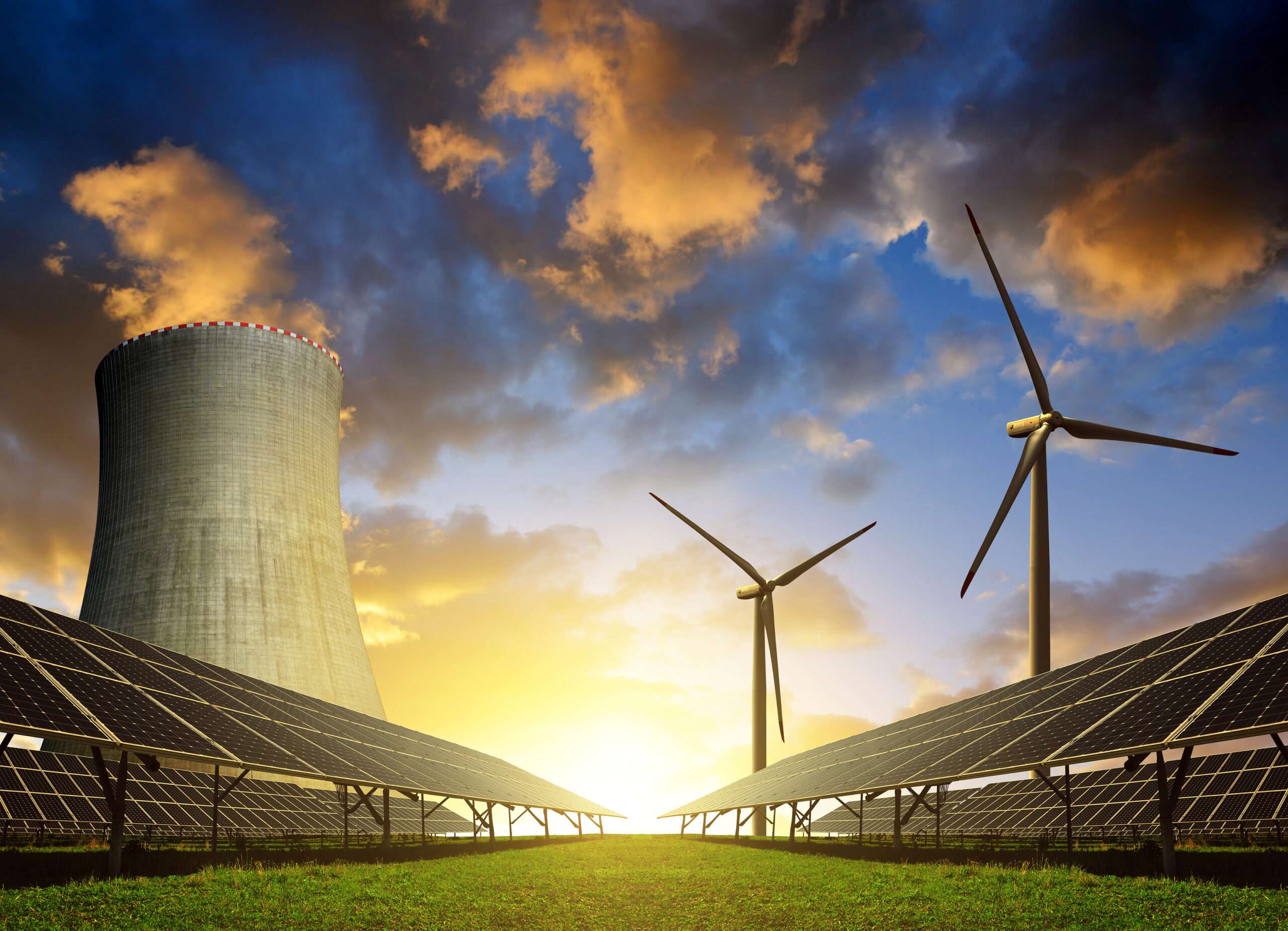
SHARM EL-SHEIKH, Egypt — “People do need to understand the importance of atoms as part of the clean energy future,” declared U.S. Secretary of Energy Jennifer Granholm at COP27. “Nuclear is finding its way back to acceptance and real enthusiasm.”
Granholm was speaking at the opening of a panel discussion on nuclear power’s role in a sustainable and secure low-carbon energy future on Wednesday. While addressing the problem of manmade climate change explains part of the growing enthusiasm for no-carbon nuclear power, the global energy crisis sparked by Russia’s invasion of Ukraine—along with the suspicious blowing up of the Nord Stream pipelines—is further impetus toward deploying nuclear generation. The result is that this latest episode of massive oil and natural gas price volatility has greatly heightened interest in how nuclear power can play a role in energy independence and security.
Granholm specifically noted that Poland has just signed an agreement with Westinghouse to build its first-ever nuclear power facility with a generating capacity of 3,750 megawatts. “The need for permanent independence from energy supplies and energy carriers from Russia is associated with the need to accelerate the implementation of investments in the construction of the first nuclear power plant in Poland,” declared a resolution from the Polish government approving the deal. Granholm further pointed out at COP27 that the U.S. and Romania have just announced a $3 billion deal to partially finance two new nuclear units in the latter country. “We think Eastern Europe will be the center of next-generation nuclear power,” declared Granholm. (In fact, Poland, Romania, Bulgaria, Ukraine, and the Czech Republic have all signed memorandums of understanding with American nuclear company NuScale Power to deploy its next-generation small modular reactors, or SMRs, as I reported back in June.)
With respect to the role that nuclear power will play in the low-carbon energy future, Granholm observed that the United Nations’ Intergovernmental Panel on Climate Change has reported that the world will need to double or triple the amount of power supplied by nuclear energy in order to reach the global goal of net-zero greenhouse gas emissions by 2050. Net-zero is defined as “cutting greenhouse gas emissions to as close to zero as possible, with any remaining emissions re-absorbed from the atmosphere, by oceans and forests for instance.”
Granholm’s figures mirror those provided by Diane Cameron during an earlier panel discussion focused on whether nuclear power could replace fossil fuels in the economic development of poor countries. Cameron, a nuclear power expert with the Organization for Economic Cooperation and Development’s Nuclear Energy Agency, cited recent studies by her agency that found that “nuclear must triple its installed global capacity from 400 gigawatts to 1200 gigawatts electric before 2050” in order to meet the Paris Agreement’s aspirational goal of keeping average global temperatures from rising 1.5 degrees Celsius above pre-industrial levels. Cameron noted that globally, 50 new nuclear plants are currently being built and plans for around 100 more are being considered.
In her reflection on COP27, panelist Carol Berrigan, the executive director of federal programs and supplier relationships at the Nuclear Energy Institute, observed that “the conversation around nuclear power is much different than it was 10 years ago.” Berrigan added, “We are getting stronger and stronger support” as more “people are recognizing that clean nuclear will play a big role in the world’s energy future.” Berrigan specifically pointed out the growing number of bills in U.S. state legislatures that support nuclear power as well as strong bipartisan support in Congress. It is worth noting that the Inflation Reduction Act includes power production tax credits that would help nuclear generators compete with already highly subsidized solar and wind power. (Here’s an idea: Just get rid of all energy subsidies.)
Both the low-carbon future panel and replacing fossil fuels panel at COP27 were highly bullish on the development and deployment of SMRs. SMRs are designed to be safe, deliver power flexibly, and manufactured at scale. Granholm cited the 345-megawatt Natrium demonstration reactor being built on the site of an old coal-fired plant in Wyoming. Besides generating 24/7 power, the plant will also store enough heat in molten salt to generate an extra 150 megawatts on demand that could keep up with the vagaries of wind and solar generation. The panelists pointed out that SMRs can be designed to replace fossil fuels by providing process heat for making steel, concrete, and chemicals. In addition, when not necessary for them to supply electricity to the grid, they can be used for desalination and the production of hydrogen. “We can decarbonize the entire economy,” boldly declared Sama Bilbao y León, the director general of the World Nuclear Association. Here’s a question: Since no-carbon nuclear power is 24/7 and can supply process heat, just exactly why does the world need to deploy massive amounts of land- and materials-intensive renewables to address the problem of manmade climate change?
So, is economic development possible without fossil fuels? “Development and industrialization have never happened without heavy reliance on fossil fuels,” observed Cameron. Nevertheless, she believes that advanced nuclear technologies could leapfrog fossil fuels. “Energy is required for development; let’s prove that fossil fuels are not necessary for development,” Cameron declared. The panel noted that the need for access to modern sources of power is enormous. Nearly 1 billion people, of whom 600 million are Africans, still do not have access to electricity. However, Cameron argued, “It is the moral responsibility of the developed world to demonstrate solutions like SMRs work” before seeking to deploy them in developing countries.
Inevitably, the issue of how to handle nuclear waste came up during the question period. “There is waste from everything,” tartly observed Alan Woods, the head of SMR strategy at Rolls Royce. In a jab at fossil fuels, he added, “The nuclear power industry does not throw its waste into the atmosphere or the oceans.” President of the Canadian Nuclear Association John Gorman asserted, “Nuclear waste has never harmed much less killed anyone.” He added, “Nuclear power is the only industry that is accountable for every particle of the wastes it produces and pre-pays for its safe handling.” Here’s another suggestion: Open the Yucca Mountain nuclear waste repository site.
While acceptance of nuclear power is growing among policy makers and even among some environmental activist groups, the dead hand of regulation remains a big barrier to deploying climate-friendly nuclear power. “We don’t have the support that the U.S. has for nuclear power,” said Europe’s FORATOM Director General Yves Desbazeille. Even though 25 percent of Europe’s electricity and 50 percent of its low-carbon generation comes from nuclear power, Desbazeille lamented that some European commissioners still “will not even pronounce the N-word.” Bilbao y León agreed: “Regulatory approvals are a huge bottleneck. We still need to figure out how to streamline regulations to enable a fast build-out.”
“Let’s do this,” encouraged Granholm at the end of her remarks. “You’ve got the framework; we just need the power.”
Well, no. The old regulatory frameworks remain. In order to get the power, policy makers like Granholm first need to knock down the regulatory barriers that still stand in the way of a clean nuclear energy future.


